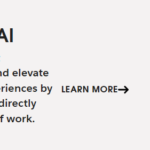Traditional marketing and social media marketing are both important tools for promoting products or services and building brand awareness. However, they are quite different in terms of how they are executed, the audiences they target, and the goals they aim to achieve.
Both traditional and social media marketing have their own unique advantages and disadvantages, so a business can choose the one which is more suitable for its marketing campaign. They can also combine the two for better reach and a more effective promotion strategy.
Traditional marketing Advantages and disadvantages
Advantages:
- Greater reach: Traditional marketing methods such as TV and radio commercials, billboards, and print advertising can reach a large and diverse audience quickly and effectively.
- Credibility: Traditional marketing methods, such as print ads in newspapers or magazines, can lend credibility to a brand because they are tangible and can be seen as more trustworthy.
- Familiarity: Traditional marketing methods are often more familiar and comfortable to consumers, as they have been used for decades.
- Resonates with older audiences: Older audiences are more likely to engage with traditional forms of advertising, such as newspapers and billboards.
Disadvantages:
- Cost: Traditional marketing methods can be expensive, especially for small businesses. Costs associated with traditional marketing include ad placement, production costs, and mailing costs.
- Lack of targeting: Traditional marketing methods tend to have a wide reach, but it can be difficult to target specific demographics.
- Measuring effectiveness: It can be difficult to track the effectiveness of traditional marketing methods and measure return on investment (ROI).
- Not Eco-friendly: Many traditional marketing methods such as billboards, flyers, and brochures, are not eco-friendly and generate unnecessary waste.
As with any marketing strategy, traditional marketing has its own set of strengths and weaknesses. Businesses must weigh the benefits against the costs and decide which traditional marketing methods are best for their products or services and target audience.
Traditional marketing Advantages and disadvantages
Advantages:
- Cost-effective: Social media marketing is relatively low-cost, making it accessible to businesses of all sizes. It also allows businesses to get a lot of engagement, likes, and shares, which increases the reach and visibility of the brand.
- Targeting: With social media, it’s easy to target specific demographics, locations, and interests through various targeting options, like retargeting, interest-based targeting, etc.
- Measuring effectiveness: It’s easy to measure the effectiveness of social media marketing through metrics such as website traffic, engagement rates, and conversions.
- Increased audience engagement: Social media platforms offer opportunities for businesses to engage with their target audience through comments, direct messaging, reviews, and more.
Disadvantages:
- Time-consuming: Social media marketing requires a consistent effort to maintain an effective campaign.
- Algorithm change: The algorithm used by social media platforms to show content to users is constantly changing, making it difficult to predict what will generate engagement and reach.
- Security concerns: Personal data of social media users are vulnerable to cyber attacks, and businesses should be aware of the risks associated with collecting and storing user data.
- Misuse: Misuse of social media can damage the reputation of a brand and can be difficult to control.
As with any marketing strategy, social media marketing has its own set of strengths and weaknesses. Businesses must weigh the benefits against the costs and decide which social media platforms are best for their products or services and target audience. It’s also important to have a good content strategy in place and to be consistent in creating and posting content to maintain a strong online presence and engagement.
Also Check: India’s Top 5 Supply Chain and logistics Startups




